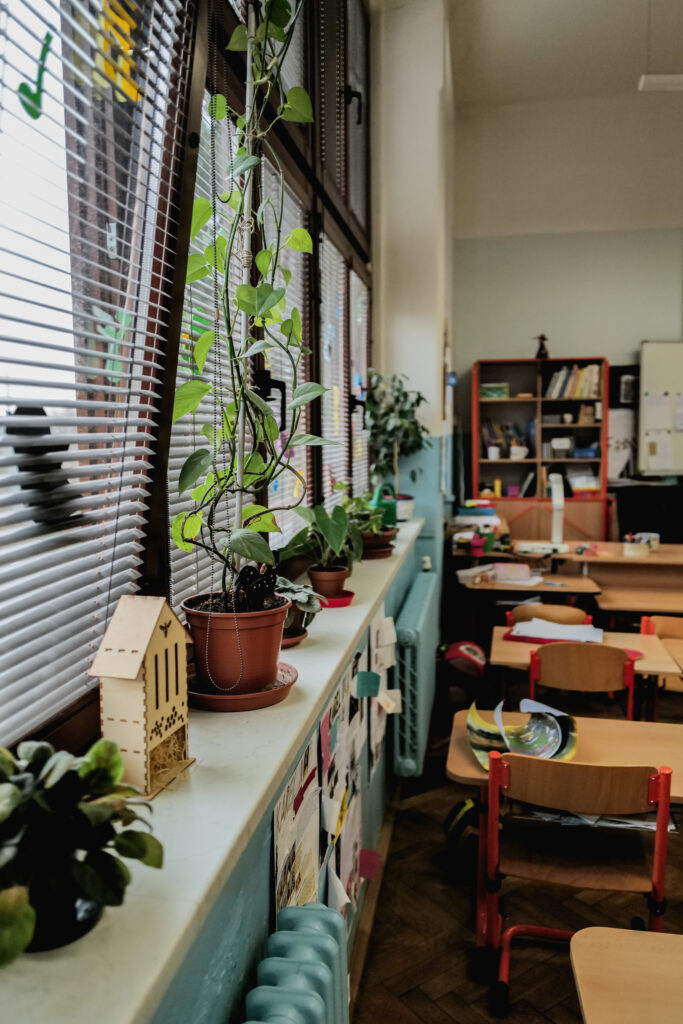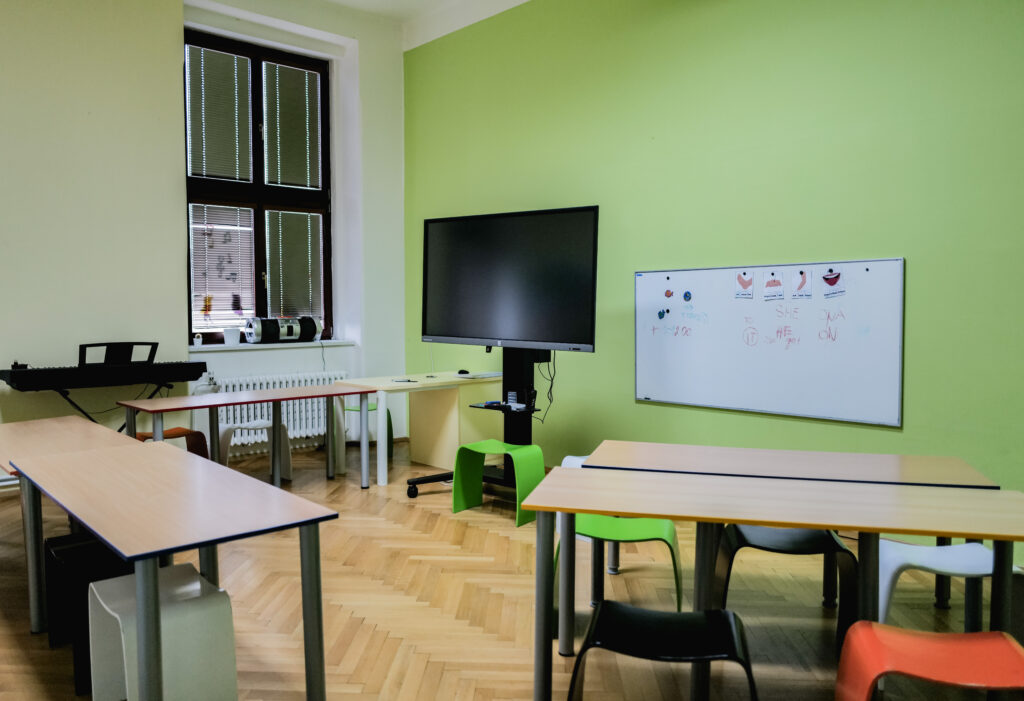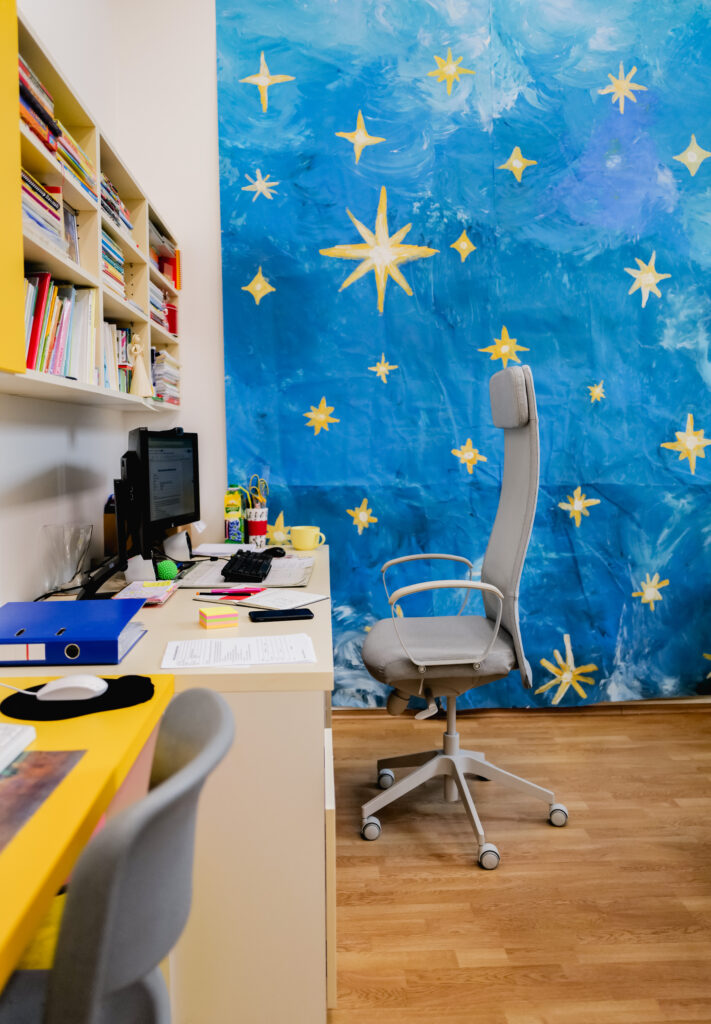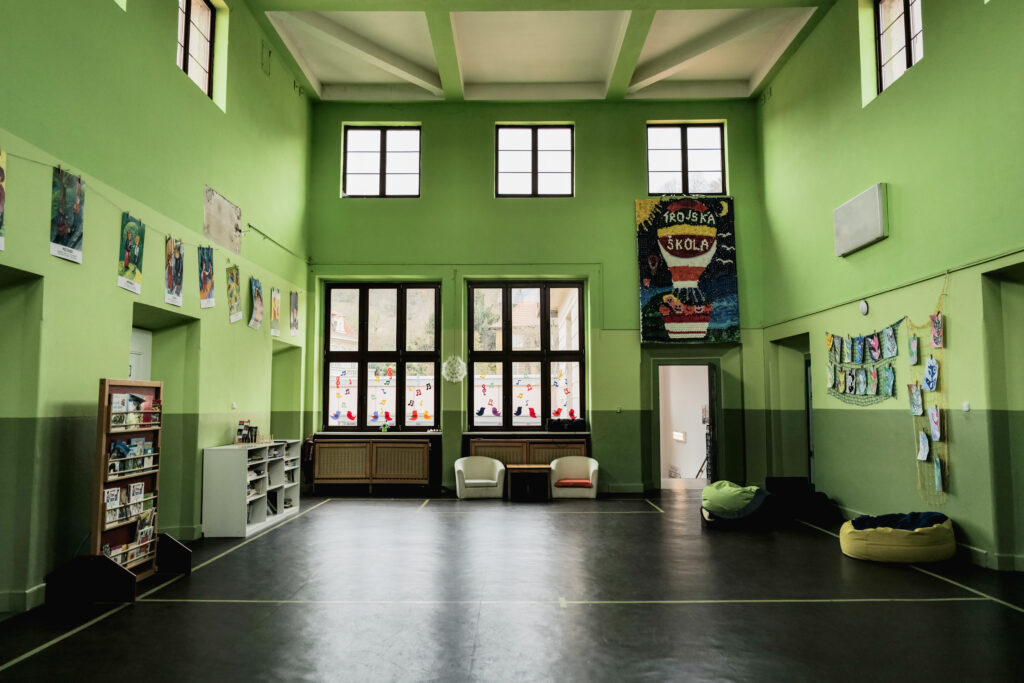Content
- Secondary education in the Czech Republic
- Types of secondary schools
- Applications and entrance exams
- Completion of studies
- Additional education
Secondary education in the Czech Republic
Elementary schools in the Czech Republic introduce students to the basics of general education. Secondary schools further develop students’ knowledge in greater detail and prepare them for universities or future jobs.
What subjects do children learn in Czech elementary schools? Find out more in our article.
Secondary education can take place at grammar schools, vocational secondary schools, vocational training centers and conservatories. In the Czech Republic, obtaining a secondary education is not a requirement. Mandatory school attendance includes only one year of pre-school education and subsequent 9 years at primary school.
Do you want to know more about Czech kindergartens? Read the next article.
Most children continue to secondary school directly after finishing primary school, typically around the age of 16. However, adults who decide to pursue a higher level of education years after completing their primary education can also attend secondary school. Additionally, individuals who wish to enhance their skills in a specific field can benefit from vocational training centers.
Different organization of the school year and communication via social media
Did you know that classes in Ukraine only last until May 31st, but students usually get more homework during the school year than in the Czech Republic? Or that the parents of classmates often communicate with each other through group chats on WhatsApp or Facebook? If you are interested in learning more about the differences in education between the Czech Republic and Ukraine, visit the website ZapojmeVšechny.cz.
Types of secondary schools
Secondary schools can be divided according to many aspects. For example, according to the operator, secondary schools are divided into:
- State/public schools – They are most often established by the region, possibly the state, ministry, municipality or city district.
- Private schools – They are established by a private entity.
- Church schools – They are established by the church. In the Czech Republic there are mainly church grammar schools.

We can also divide schools according to the specialization or level of education offered:
- Grammar school – Secondary schools that can have some specialization but primarily offer general secondary education and prepare students for university studies. Their versatility allows students to decide for themselves the direction they would be interested in pursuing in the future. Grammar schools are often perceived by the public as selective schools that have high expectations for students’ knowledge and efforts. The duration of study at grammar school can be eight years (students continue to the grammar school from the fifth grade of primary school), six years (students join grammar school from the seventh grade), or four years (after completing the nine-year study at primary school). At the end of their studies students take the final exam – matriculation exam.
- Secondary Vocational Schools – This category encompasses a wide range of institutions with specific vocational orientations, such as business academies, forestry schools, industrial and art-industrial schools, hotel schools and many others. These schools provide students with the opportunity to acquire general knowledge in subjects from the core curriculum while preparing them for future careers and teaching them knowledge and skills specific to particular sector. The studies can be concluded with a matriculation exam or a final exam and the acquisition of a vocational certificate.
- Lyceum – Lyceums are sometimes described as a middle ground between grammar school and secondary vocational school. Similar to grammar schools, they emphasize the general knowledge of students, but in addition, they tend to focus on a particular professional direction, often in a technical field. Lyceums prepare students for further studies at universities and are concluded with a matriculation exam.
- Secondary vocational training centers – In contrast to other types of schools, vocational training centers focus less on general academic foundations and instead provide more detailed preparation for specific occupations. They can be specialized in areas such as culinary arts, gardening, electrical engineering, painting, or glassmaking. Vocational training centers are suitable for students with manual skills who may not have strong academic ambitions but prefer to gain work experience in the labor market at an earlier stage. The studies at vocational training centers are typically concluded with an exam and the attainment of a vocational certificate, although some schools also offer the option of taking a matriculation exam.
- Conservatories – Conservatories educate students in non-visual arts, such as music, dance and dramatic art. However, general education subjects and artistic-pedagogical preparation are part of the teaching. Studies at the conservatory are usually for six years (eight years for dance majors), and after four (eight years in the case of an eight-year study) students can take the matriculation exam. It is compulsory at some schools, at others only voluntary. In that case, instead of matriculation, students take final commission exams in Czech language and literature and history of the field. The entire course of study is concluded with a graduation performance (discharge examination), after which students receive the title of “Diplomated Specialist” (DiS.), similar to the title awarded after completing studies at higher vocational schools.
Are you choosing a school? You can find a list of secondary schools, for example, on the Atlas školství website, and information about free capacities on the website Místo ve škole.
Applications and entrance exams
In order to be able to study at a secondary school, you must have completed compulsory schooling and successfully completed your primary studies. Those interested in studying at a secondary school must submit an official application form created by the Center for the Assessment of Education Results (aka Cermat or CZVV) and hand it to the target school by post, in person or electronically at the contact point of the public administration.
An applicant for education in a field with a matriculation exam can apply for up to two secondary schools or two matriculation fields for the 1st round of the admission procedure. In addition, he can also submit up to two applications for fields with a talent test. He can submit a maximum of 4 applications in total, by the beginning of March at the latest, or by the end of November in the case of fields with a talent test. You can find printed forms of various types of applications as well as instructions for filling them out on the Cermat website.

Entrance exams can have several rounds. In the first round, students who are preparing for fields of study completed by the matriculation exam must take state entrance exams in Czech and mathematics prepared by Cermat. The first rounds of state entrance exams usually take place in April, with alternate dates in May. If the children have chosen to study at the conservatory, they “only” have to take the talent entrance exams, which usually take place in January or February. At sports gymnasiums, children have both a uniform entrance exam and a talent exam. Schools may also consider other criteria during the admissions process, such as the grade point average of the last few report cards.
Do you want to try a sample assignment of the state entrance exam in Czech or mathematics? You can find them here.
Czech schools currently offer customized entrance exams to Ukrainian applicants. Sufficient knowledge of the Czech language is assessed through personal interviews instead of written tests. All foreigners who have received their previous education exclusively outside the Czech Republic have the right to a complete exemption from Czech language entrance exams. Ukrainian students take the mathematics exam, but they can request to have it administered in the Ukrainian language.
Parents must have the opportunity to communicate with the school
All foreigners have the right to request the school to provide free translation and interpreting services. Schools can contact regional coordinators of the National Pedagogical Institute (NPI), who are able to arrange translators in a total of 19 languages for preschools, primary schools and secondary schools.
When the students have completed the admission process, the principal selects the accepted applicants and informs them or their parents. Unaccepted applicants have the right to appeal against the decision within 3 days of its delivery at the latest. Some students get into several schools, and in the end have to choose only one of them, thereby freeing up their place for unaccepted applicants.

Completion of studies
Students always conclude secondary school with a final exam, but they can achieve different levels of secondary education depending on the type of final exam. Graduates thus obtain either:
Secondary Education
- Students obtain it after one or two years of secondary education.
- The requirement is to pass the final exam.
- Graduates do not receive any official certificate (such as the matriculation exam or vocational certificate), only a final report card.
- It is typical for practical school programs or for students without further academic aspirations.
Secondary Education with Vocational certificate
- Students obtain it after 2 or 3 years of secondary education.
- It is typical for secondary vocational schools or vocational training institutions.
- After obtaining the vocational certificate, students can choose to end their studies or continue and also pass the matriculation exam.
Secondary education with matriculation exam
- Students obtain it after successfully completing educational programs of a six-year or eight-year grammar school, after 4 years of full-time education, after 2 years of extension full-time education, or after completing an educational program of shortened studies.
- The matriculation exam allows graduates to continue to higher education after secondary school.
Higher professional education
- It is obtained by students of conservatories and higher vocational schools (which, however, do not belong to the secondary school system, but to the university system).
- Completion of the discharge examination is a condition.
What do the final exams look like? The matriculation exam consists of a state (uniform) and a profile part.
State part
– The student chooses two of the three specializations, which are: Czech language and literature, foreign language, mathematics.
– It consists of a didactic test, a written essay and an oral exam.
– The Ministry is responsible for its preparation and progress.
Profile section
– The student chooses two to three subjects from his school’s offer.
– Its form is determined by the school.
– The school director is responsible for its preparation and progress.
Students take the matriculation exams in several stages, and the deadlines change slightly every year. Students usually take the didactic tests in the first half of May, while the oral examination takes place at the end of May and the beginning of June.
Foreigners and matriculation exams in the Czech Republic
Foreigners in the Czech Republic have the right to individualize their matriculation exams. What changes can they request? Students who have been educated abroad for at least four years in the previous eight years have the opportunity to ask the school director for an increase in time and the use of a translation dictionary for the exams of the common part in Czech language and literature and mathematics. They are also allowed to use the Dictionary of Written Czech for written essay from Czech language.
As for the final exams to obtain a vocational certificate in secondary vocational schools and vocational training centers, they consist of a written exam, a practical exam in vocational training, and an oral exam. The conservatory graduation examination includes an examination in foreign language, a theoretical examination in subjects specified by the framework educational program, a thesis and its defense, a performance in one or two main disciplines, and possibly an examination in artistic-pedagogical preparation. Unlike the matriculation exam, the format of exams in vocational schools, training centers and conservatories can significantly vary across institutions based on their focus and the specifics of their school curriculum.

Additional education
Some people achieve a certain level of secondary education, but subsequently want to obtain another qualification or level of education. They can make such decision immediately after graduation, but also later in adulthood. They can choose from 3 types of studies:
1. Extension studies are intended for those who have obtained a vocational certificate but want to supplement their secondary education with a matriculation exam. The course lasts two years.
2. Abbreviated studies for obtaining a secondary education with a vocational certificate are intended for graduates with a matriculation exam or vocational certificate who want to obtain additional qualifications. It lasts one to two years.
3. Shortened studies for obtaining secondary education with matriculation examination are intended for graduates of fields with matriculation examination who want to obtain additional qualifications. It lasts one to two years.
Leaflet for refugees from the Ministry of Education and Culture
How to learn Czech? And with whom to consult future studies? The Ministry of Education has prepared a special leaflet for Ukrainian children with information and links that will help them better understand the principles of Czech secondary education. It is available in Czech, Ukrainian and English.
